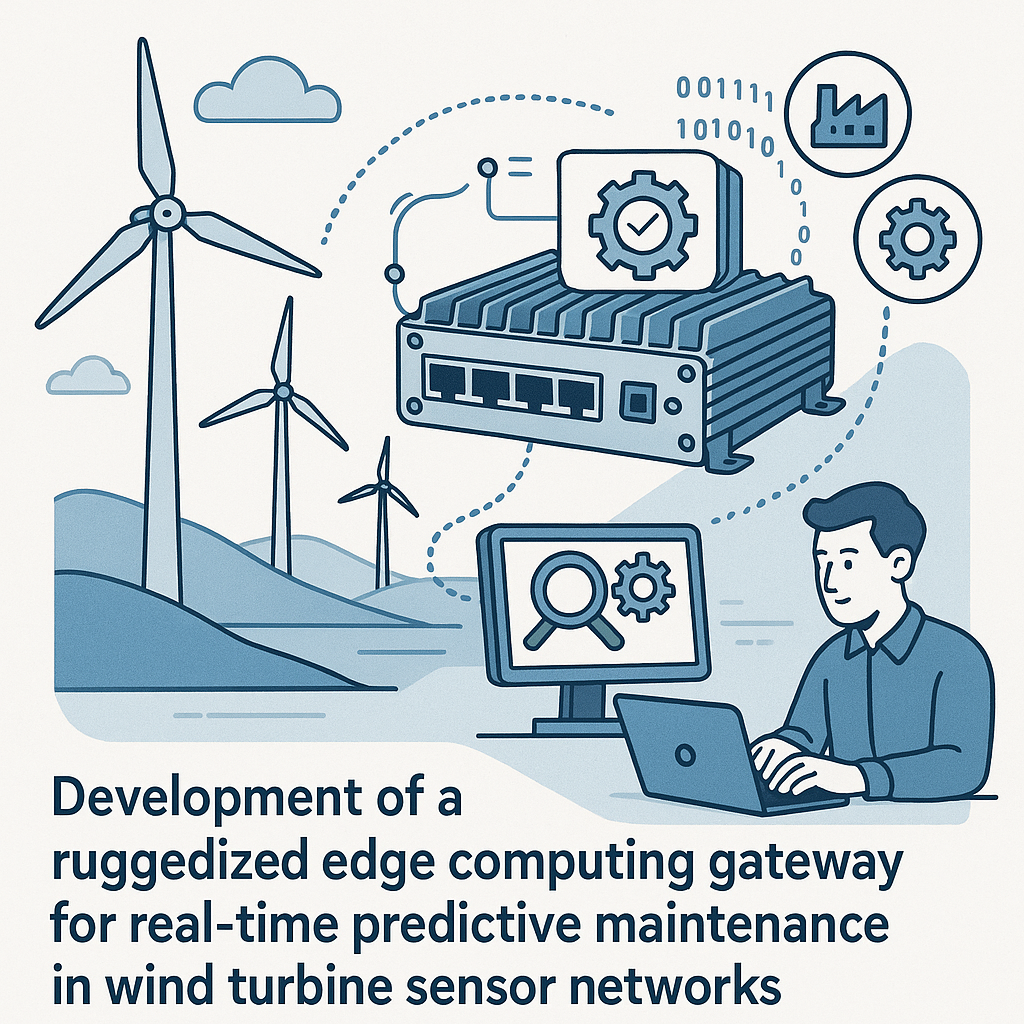Introduction
As the demand for renewable energy sources continues to rise, wind energy has emerged as a pivotal player in the global energy landscape. However, ensuring the optimal performance of wind turbines requires advanced monitoring and maintenance strategies. This blog post explores the development of a ruggedized edge computing gateway designed for real-time predictive maintenance in wind turbine sensor networks. We will examine the technological advancements involved, the challenges faced, and the future implications of this innovation.
The Importance of Predictive Maintenance in Wind Energy
Predictive maintenance (PdM) involves the use of data analytics and machine learning to predict when equipment is likely to fail, allowing for timely maintenance and minimizing downtime. In the context of wind turbines, this approach is crucial due to:
- Increased Reliability: Predictive maintenance enhances the reliability of wind turbines, reducing unexpected failures.
- Cost Savings: By preventing catastrophic failures, wind farm operators can save significant costs associated with repairs and lost production.
- Extended Lifespan: Regular maintenance based on predictive analytics can extend the operational life of wind turbines.
Role of Edge Computing in Predictive Maintenance
Edge computing involves processing data closer to its source rather than relying on centralized data centers. This approach offers several advantages for predictive maintenance in wind turbines:
- Reduced Latency: Edge computing allows for faster data processing and response times, which is essential for real-time monitoring.
- Bandwidth Savings: By processing data locally, less bandwidth is required for data transmission to the cloud, reducing costs and improving efficiency.
- Enhanced Data Security: Local data processing minimizes the risk of data breaches that can occur during transmission.
Developing a Ruggedized Edge Computing Gateway
The development of a ruggedized edge computing gateway for wind turbine sensor networks involves several key components:
1. Hardware Design
The hardware must be designed to withstand harsh environmental conditions, including extreme temperatures, moisture, and vibrations. Key features include:
- Durable Enclosure: A weatherproof and dustproof casing that can protect internal components.
- High-Performance Processors: Capable of handling complex algorithms for real-time data analysis.
- Robust Connectivity: Support for various communication protocols to interface with different sensors and systems.
2. Software Development
The software is critical for managing data collection, processing, and analysis. Important aspects include:
- Data Acquisition: Integrating with multiple sensor types to gather real-time performance data.
- Machine Learning Algorithms: Implementing predictive models that analyze data patterns to forecast potential failures.
- User Interface: Developing an intuitive interface for operators to visualize data and receive alerts.
3. Integration with Existing Systems
For the edge computing gateway to be effective, it must seamlessly integrate with existing wind farm management systems. This includes:
- Interoperability: Ensuring compatibility with various sensor types and communication protocols.
- Data Sharing: Facilitating the exchange of data between the gateway and central management systems for comprehensive analysis.
- Cloud Connectivity: While edge computing reduces reliance on the cloud, some data may still need to be transmitted for long-term storage and analysis.
Challenges in Development
Developing a ruggedized edge computing gateway is not without its challenges:
- Environmental Factors: Ensuring the hardware can operate reliably in extreme conditions.
- Data Management: Handling the vast amounts of data generated by sensors while maintaining performance.
- Scalability: Designing a system that can scale as more turbines and sensors are added to the network.
The Future of Wind Turbine Maintenance
The advent of ruggedized edge computing gateways is set to revolutionize predictive maintenance in wind turbine sensor networks. The benefits include:
- Enhanced Operational Efficiency: Real-time insights can lead to more informed decision-making.
- Lower Operational Costs: Reduced downtime and maintenance costs contribute to overall profitability.
- Sustainability: Improved efficiency in wind energy production supports global sustainability goals.
Conclusion
The development of ruggedized edge computing gateways represents a significant advancement in the field of predictive maintenance for wind turbines. By leveraging real-time data processing and analysis, these systems can enhance the reliability and efficiency of wind energy production. As technology continues to evolve, we can expect even greater innovations that will further optimize the maintenance and operation of wind turbine sensor networks, paving the way for a more sustainable energy future.



